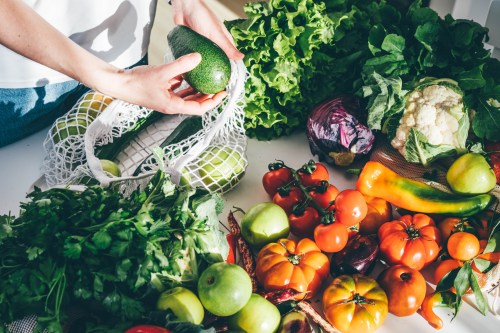Our editors independently select these products. Making a purchase through our links may earn Well+Good a commission
7 Impressive Saffron Tea Benefits Steeped in History and Backed by Science
Learn about the many impressive saffron tea benefits and the research that backs them up from a registered dietitian.

If you’re a foodie, you may be aware of just how fancysaffron is, thanks to its limited supply and title as the world’s most expensive spice. This crimson-colored delicacy is steeped in history, dating back over 3,000 years ago, and is most often used to flavor and add color to dishes like paella with its subtle taste and intense pigmentation. But saffron has always been used over the centuries for a multitude of reasons, as a natural dye, perfume, cooking ingredient, and medicine, thanks to its impressive health benefits.
Experts in This Article
registered dietitian nutritionist for Thrive
“One of the primary ways that saffron benefits health is by way of mood support,” Gaby Vaca-Flores, RDN, registered dietitian nutritionist and founder of Glow+Greens, previously told Well+Good. “Specifically, it’s beneficial for improving mood in people with mild to moderate depression.” Lately, these health perks are why some people have been savoring this delicacy as tea, instead of just as an ingredient for cooking, and there are some seriously compelling saffron tea benefits to back up the hype.
7 saffron tea benefits, according to a registered dietitian
Both saffron and saffron tea are packed to the brim with a variety of nutrients including plant compounds, vitamin C, iron, manganese, copper, potassium, magnesium, and B vitamins. These lend to an impressive number of health perks. “Some find that the benefits from tea are felt more quickly, especially in its ability to enhance mood,” says Megan Hilbert, RDN, registered dietitian nutritionist for Thrive. “With that said, more studies need to be conducted on the differences between drinking saffron tea and consuming it through food or supplement form.”
Reduces inflammation
When it comes to bioactive plant compounds, you’ll find no shortage in saffron. This pricey spice contains crocin, safranal, crocetin, kaempferol, and carotenoids. These compounds are “beneficial antioxidants that can help prevent disease due to their ability to fight free radicals, which can help prevent chronic and acute illness,” shares Hilbert.
Champions mental health
Many studies have found that saffron offers potent antidepressant and anti-anxiety benefits. “Some studies have even shown saffron to be as effective as Prozac to treat mild depression,” says Hilbert.
Offers neuroprotective benefits
Beyond having beneficial effects on mood disorders, saffron has also been found to be protective against neurodegenerative disorders. One review found that it may be effective in slowing cognitive impairment in Alzheimer’s patients, as does this 2016 analysis.
Supports heart health
Thanks to its impressive anti-inflammatory benefits, saffron has also been linked to better heart health. One study even found it to be tied to lower cholesterol levels. Meanwhile, a 2021 review discovered that saffron may alleviate hypertension, or prolonged high blood pressure, but more evidence is needed to substantiate this claim. For those with heart disease, saffron may be a smart addition as it has also been associated with weight loss in those with cardiac illness, which can aid in overall disease management.
Wards against cancer
It may come as no surprise that saffron can stand up to cancer given that we know it contains vitamin C and a robust variety of plant compounds. But research backs this up this presumption as saffron has been found to offer antitumor and cancer-preventative properties. This is due, in part, to crocetin and crocin’s ability to seek out and kill off cancer cells while also inhibiting cancer cell proliferation. Plus, the antioxidant kaempferol in saffron has been linked to these same cancer-fighting mechanisms.
Boosts eye health
This colorful spice is also associated with improved eye health, thanks, in part, to the eye-boosting carotenoids it contains. Plus, research has found saffron to improve macular degeneration symptoms while also helping prevent vision loss.
Supports women’s health
“Studies have shown saffron to be helpful in managing premenstrual syndrome (PMS) symptoms and even premenstrual dysphoric disorder (PMDD),” explains Hilbert. “Taking 15 milligrams (mg) of saffron two times a day has been shown to provide this relief.”
Buying quality saffron
So, while these health benefits may sound appealing, many may be deterred from even giving saffron tea a try due to its steep price tag. But thankfully you don’t need very much saffron to make an effective tea, only a few strands per cup. One gram contains upwards of 450 strands and only costs about 10 to 15 dollars, so you can really stretch your dollar when it comes to making this trendy drink.
When on the hunt for quality saffron, make sure to do some research on your supplier—much of the world’s saffron is produced in the Middle East, Europe, and parts of Asia. You want to buy this spice from a reputable source, whether that be online or from a quality grocery, health food, or specialty food store. Be wary of any saffron that is super reasonably priced as some manufacturers will mix the real deal with other ingredients to drive the price down, diluting not only the flavor but the health benefits. Your saffron should be a beautiful deep red color without any orange flecks. Typically, the richer the color, the higher the quality.
Once home, you want to store your saffron in a cool, dry place like a spice cabinet but others actually opt for the freezer for an even longer shelf life. In the pantry, this lux spice will stay good for up to one or even two years, while you can get as many as three years in the freezer.
How to make saffron tea at home
To prepare saffron tea, there are many different avenues you can take. You can opt for a plain variety by simply steeping a few threads in boiling water for a few minutes. You could also grind your saffron with a mortar and pestle before steeping, but this is a personal preference.
However, be sure to avoid steeping your tea for much longer than around eight minutes, as this can result in a strong, bitter taste. It’s a good idea to add your threads to a tea ball before brewing, so you can pull them out before they turn your tea bitter.
From here, you can jazz up your tea by adding ingredients like tea leaves, herbs, spices, sweeteners, and milk. These could include cardamom, white or green tea, basil, mint, lemon, ginger, or honey. Many opt for white tea over green when making saffron tea as it tends to lend a more complementary, subtle flavor.
You can enjoy saffron tea hot or cold and even make a big batch of it to store in the fridge for up to a week—if you don’t drink it before then. Otherwise, there are a few companies selling saffron tea blends for purchase including The Republic of Tea, Tahmina Tea, Villa Jerada, and The Fullest, prices range from $14–$61.
Whether you opt to make this buzzworthy tea at home or purchase a pre-made blend, the number of saffron tea benefits to be had is beyond impressive. This combined with its uniquely delicious taste makes it easy to see why it’s been a buzzy spice for centuries.
Sign Up for Our Daily Newsletter
Get all the latest in wellness, trends, food, fitness, beauty, and more delivered right to your inbox.
Got it, you've been added to our email list.










